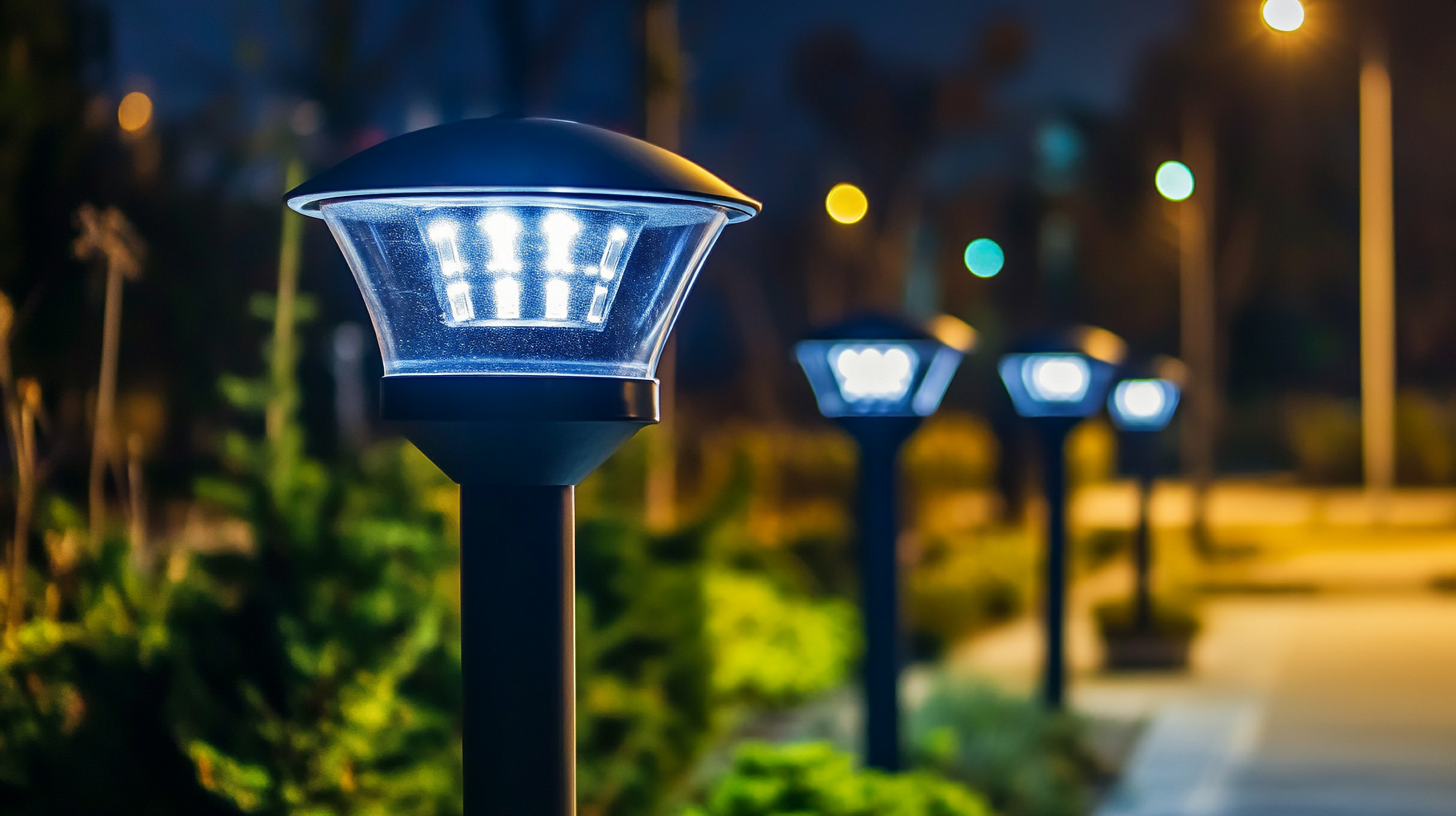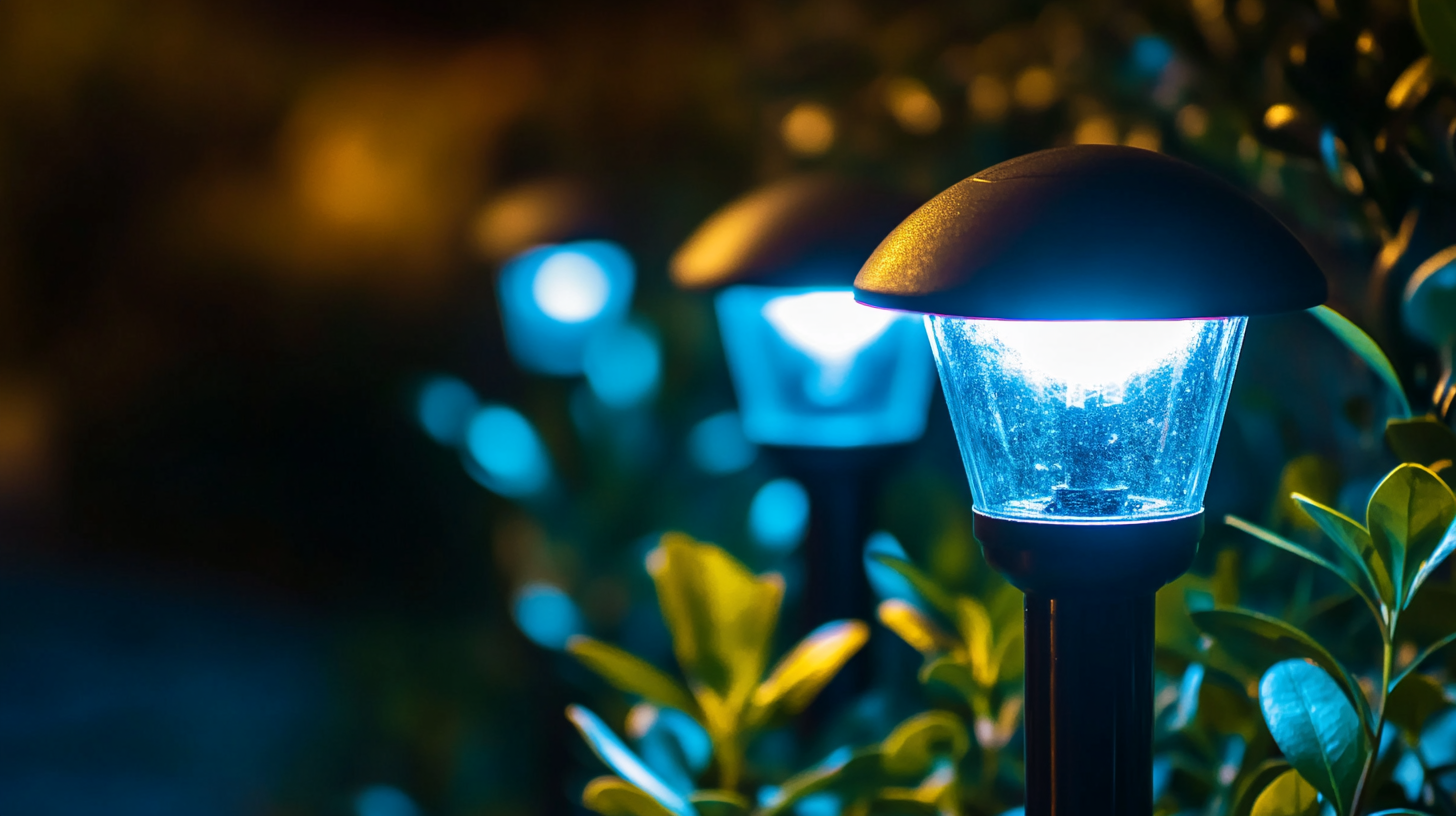How to Choose the Best Solar LED Lights for Your Outdoor Spaces: A Comprehensive Tutorial
In recent years, the demand for solar LED lights has surged as homeowners and businesses alike seek sustainable and energy-efficient solutions for their outdoor spaces. The phrase "中国制造,品质升级,畅销全球" encapsulates the remarkable advancements in solar technology, particularly as it pertains to products made in China that have gained global popularity. Choosing the right solar LED lights can significantly enhance the aesthetics, functionality, and security of your outdoor areas while reducing electricity costs and carbon footprints. This comprehensive tutorial is designed to guide you through the process of selecting the best solar LED lights available on the market today. From understanding the key features and benefits to evaluating the efficiency and durability of these products, you will be equipped with the knowledge to make an informed decision and illuminate your outdoor spaces beautifully and sustainably.

Key Factors to Consider When Selecting Solar LED Lights for Outdoors
 When it comes to selecting solar LED lights for your outdoor spaces, several key factors should guide your decision. One of the most critical aspects is the brightness measured in lumens. According to a report by the U.S. Department of Energy, outdoor lighting needs typically range from 100 to 200 lumens for walkways and 500 lumens for larger areas like patios. This ensures you choose lights that not only enhance safety but also create an inviting atmosphere.
When it comes to selecting solar LED lights for your outdoor spaces, several key factors should guide your decision. One of the most critical aspects is the brightness measured in lumens. According to a report by the U.S. Department of Energy, outdoor lighting needs typically range from 100 to 200 lumens for walkways and 500 lumens for larger areas like patios. This ensures you choose lights that not only enhance safety but also create an inviting atmosphere.
Battery capacity is another essential consideration. A study by the Solar Energy Industries Association (SEIA) highlights that higher capacity batteries allow for longer illumination times, especially during cloudy days. Look for lights with lithium-ion batteries, as they can provide more efficient energy retention and a longer lifespan than lead-acid options.
Tips: Always check the solar panel's efficiency; panels with at least 18% efficiency ensure quicker charging. Additionally, consider the material quality. Durable, weather-resistant materials can significantly extend the lifespan of your solar LED fixtures, offering both longevity and reliable performance in harsh outdoor conditions.
Comparing Different Types of Solar LED Lights: A Buyer’s Guide
When selecting solar LED lights for your outdoor spaces, it’s crucial to understand the different types available on the market. Generally, they can be categorized into pathway lights, flood lights, string lights, and decorative lights.
 Pathway lights are excellent for illuminating walkways and ensuring safety during the night. They often feature a low profile and provide a subtle glow that enhances visibility. Flood lights, on the other hand, are designed to cast a broad beam of light, making them ideal for larger areas or for providing security around the home.
Pathway lights are excellent for illuminating walkways and ensuring safety during the night. They often feature a low profile and provide a subtle glow that enhances visibility. Flood lights, on the other hand, are designed to cast a broad beam of light, making them ideal for larger areas or for providing security around the home.
String lights add a charming ambiance to outdoor gatherings and can be draped over patios or garden spaces. They come in various styles, including traditional bulb designs and more modern options like globe or Edison bulbs. Decorative lights, such as lanterns or solar garden stakes, not only serve as a light source but also double as unique outdoor decor, allowing you to express your personal style. When comparing these types, consider factors like brightness, battery life, and design to ensure you choose the best option that enhances both the functionality and aesthetic of your outdoor area.
Understanding Brightness and Color Temperature in Solar LED Lighting
When selecting solar LED lights for outdoor spaces, understanding brightness and color temperature is crucial. Brightness is typically measured in lumens, with most solar LED lights ranging from 100 to 1,000 lumens. A recent report by the National Renewable Energy Laboratory (NREL) indicates that for outdoor residential use, fixtures should produce at least 200 lumens to effectively illuminate pathways or gardens. For larger areas, such as driveways or patios, lights with 500 to 1,000 lumens are recommended to ensure visibility and safety.
Color temperature, measured in Kelvins (K), impacts how warm or cool the light appears. Lights with a color temperature of 2700K to 3000K emit a warm, inviting glow, ideal for creating a cozy atmosphere in gardens or around seating areas. Conversely, cooler lights ranging from 5000K to 6000K can enhance visibility, making them suitable for security lighting. According to the Illuminating Engineering Society (IES), a balanced approach combining warmth and brightness can improve the outdoor aesthetic while providing sufficient illumination for safety and comfort in residential settings.
Analyzing Battery Life and Solar Panel Efficiency in Outdoor Lights
When selecting solar LED lights for your outdoor spaces, it's crucial to evaluate battery life and solar panel efficiency. The battery life of solar lights determines how long they can operate after the sun goes down, which is particularly important in areas with limited sunlight. Look for lights that use high-capacity lithium-ion batteries, as they not only last longer but also charge faster compared to traditional nickel-cadmium batteries.
When considering solar panel efficiency, pay attention to the wattage and type of panels used in the lights. Monocrystalline solar panels tend to be the most efficient, converting more sunlight into energy. This efficiency ensures that your lights can gather enough energy during the day, providing sufficient illumination at night.
**Tips**: Always check the specifications for the solar panel and battery capacity before purchasing. Opt for lights that offer adjustable brightness settings; these can conserve energy on brighter nights. Additionally, installing your solar lights in areas with direct sunlight will maximize their charging potential and enhance performance.
How to Choose the Best Solar LED Lights for Your Outdoor Spaces: A Comprehensive Tutorial - Analyzing Battery Life and Solar Panel Efficiency in Outdoor Lights
| Light Type | Battery Life (Hours) | Solar Panel Efficiency (%) | Brightness (Lumens) | IP Rating (Water Resistance) |
|---|---|---|---|---|
| Pathway Lights | 8-10 | 18 | 100 | IP65 |
| Flood Lights | 12-15 | 22 | 800 | IP67 |
| String Lights | 6-8 | 15 | 50 | IP44 |
| Wall Lights | 10-12 | 20 | 200 | IP65 |
| Spotlights | 8-10 | 18 | 300 | IP66 |
Evaluating Design and Durability for Long-lasting Outdoor Solar Solutions
When selecting solar LED lights for your outdoor spaces, it’s essential to evaluate both design and durability to ensure a long-lasting solution. Design plays a critical role not only in aesthetics but also in functionality. Look for fixtures that can blend seamlessly with your landscaping while providing adequate illumination. Consider the type of lighting you need—whether it’s ambient lighting along pathways or focused lighting for highlighting specific features. A well-designed light will complement your outdoor decor and enhance the visual appeal of your space.
Durability is another vital aspect to consider, especially since outdoor lights are exposed to various weather conditions. Opt for materials that are resistant to rust, corrosion, and UV damage. High-quality solar LED lights often feature durable casings made from aluminum or reinforced plastic, ensuring they can withstand harsh elements. Additionally, check for waterproof ratings and ensure that the solar panels are adequately protected from potential debris and dust. By prioritizing both design and durability, you can invest in solar LED lights that not only elevate your outdoor space in appearance but also stand the test of time.
